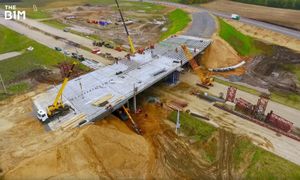On February 1, 2025, Finance Minister Nirmala Sitharaman presented the much-anticipated Railway Budget as part of the Union Budget, outlining significant allocations and plans for the Indian Railways. This presentation marks the integration of the railway budget within the government's overall fiscal strategy, which started after the separate Railway Budgets ended in 2016.
For the financial year 2025-26, the Indian Railways received a capital expenditure allocation of Rs 2.52 lakh crore, maintaining the same figure as the previous year's budget. The decision to keep the budget unchanged has drawn mixed reactions, especially amid expectations of substantial increases to support infrastructure growth and modernized services.
Highlights of this year's budget include ambitious projects aimed at enhancing passenger comfort and safety. Among these is the announcement to manufacture 17,500 Non-AC coaches, aimed at catering to low-income travelers. Railway Minister Ashwini Vaishnaw emphasized the commitment to balance production, ensuring accessibility for economically weaker sections as well as premium travelers.
Under the Rail Budget initiatives, the production of Amrit Bharat trains is also set to increase. These new generation non-AC trainsets, developed by the Integral Coach Factory (ICF) based in Chennai, are envisioned to provide affordable, comfortable travel experiences. The government has committed to producing 100 such trainsets, which are expected to run at speeds of 130 kmph and feature modern amenities for enhanced passenger comfort.
Safety has been underscored as a key priority for the Railways this year. With the sector having faced criticism over safety concerns following some major accidents, the government aims to modernize its operational frameworks. Plans include upgrading railway tracks and signaling systems to prevent accidents and improve overall train operations.
Despite some advancements, the budget contains no major reforms for the railway sector, which has disappointed some stakeholders. According to Vinod Nair from Geojit Financial Services, the muted allocation and lack of reform sent key railway stocks sliding. Shares of important railway companies like IRCON and IRCTC experienced significant drops following the presentation, indicating investor frustration over unmet expectations.
During her speech, Sitharaman acknowledged the backdrop of economic challenges impacting various sectors, including the railways. While India's GDP growth is projected to decline, the government's continued investment aims to attract private participation and advocacy for infrastructural development across the railway network.
One of the pivotal components of the budget is the allocation for railway safety, which has remained consistently around 20% of the total railway expenditure over recent years. This level of investment reflects growing calls for enhanced safety features, such as the installation of more modern signalling systems and track upgrades, addressing concerns raised by past incidents.
Industry leaders have expressed mixed sentiments about the budget's impact. Ajay Singh from SpiceJet praised the focus on the UDAN scheme, which is expected to contribute significant regional connectivity through the introduction of additional destinations. The scheme has proved successful, having connected over 88 airports, thereby enhancing mobility for middle-class citizens over recent years.
Funding for public-private partnerships (PPP) remains a pivotal theme, as the government is eager to leverage additional resources to support capital-intensive projects like new rail line constructions and electrification efforts. The budget aims to provide the necessary infrastructure to promote industrial development and invigorate regional economies.
Overall, the Railway Budget 2025, framed within the larger Union Budget, reflects the government's long-term vision for enhancing India's railway capabilities. While the allocations may seem conservative to some, the focus on safety, infrastructure modernization, and new services like Amrit Bharat trains presents significant opportunities for growth and improved passenger experiences. The ultimate success of these plans will depend significantly on the execution and resulting partnerships developed during this fiscal year.



